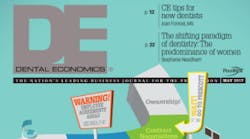One of the most exciting things for a dentist to do is build or purchase a building. However, without careful planning, income taxes can become a significant issue. When purchasing a building for a dental practice, the purchaser is required in the tax law to deduct the costs of the building over a defined time period. For commercial buildings (land is not deductible), this is typically 39 years. This can be a significant burden for dentists due to the mismatch of write-offs compared to the cost associated with the building.
Enter the cost segregation study, which is a comprehensive analysis of the investment in a newly constructed or existing building. By separating the building costs related to tangible personal property and land improvements, tax deductions are accelerated, thereby increasing cash flow earlier. A cost segregation specialist working with the general contractor and/or architect will study blueprints and site plans, analyze cost data, and provide a detailed report that contains an asset listing with tax depreciation methods. In one recent example, a doctor who built a new $1.7 million building saw an increased deduction of $400,000 in the first year!
The crux of a cost segregation study is to determine whether an asset used in construction is real property (typically longer lived with a 39-year recovery period), or personal property that has been deployed to construct the building (shorter lived with a typical recovery period of five or seven years). Generally, the determination of whether an asset is personal property rather than real property revolves largely around two factors—whether the asset is constructed to remain in place permanently and the specialized use of the asset in question.
IRS guidelines state that a cost segregation study should always classify assets into property classes (e.g., land, land improvements, building, equipment, and furniture and fixtures), and should reconcile the costs allocated to the various classes to the total project cost. A quality study is accurate and well documented, and should be prepared by an individual with knowledge of both the construction process and tax law involving property classifications for depreciation purposes.(1)
Another advantage of a cost segregation study is to identify component parts of a building so they can be written off more easily as they break or wear out. For example, if a portion of a building’s cost is allocated to the roof and depreciated separately, there might be an opportunity for the taxpayer to write off the remaining undepreciated cost of the roof when it needs to be replaced. Without treating this as a separate component, the cost would be intertwined with the building cost and could only be recovered over the full 39-year recovery period.
Many taxpayers are unaware that a cost segregation study can be performed several years after the date of acquisition. An appraisal from the time of purchase can be leveraged to allocate the purchase price based on values at that time. IRS regulations allow a taxpayer to recalculate what the accelerated depreciation would have been in the early years and claim that as a “catch-up” adjustment in the current year without amending any prior tax returns.(2)
When considering the benefits of a cost segregation study, it’s important to keep a couple of things in mind. First, the cost of having a study performed by a qualified professional varies based on several reasons. Second, since the real benefit of accelerating tax deductions is the time value of money, taxpayers need to consider other potential factors, such as the recapture tax or the tax position of the ownership group, which limits the study’s usefulness. Every taxpayer is unique, so property owners should always consult their tax advisor before engaging a cost segregation professional.
REFERENCES
1. IRS. Principle elements of a quality cost segregation study and report. In: Cost Segregation Study and Report. https://www.irs.gov/businesses/cost-segregation-audit-technique-guide-chapter-4-principal-elements-of-a-quality-cost-segregation-study-and-report. Updated November 3, 2016. Accessed March 14, 2017.
2. General rule for methods of accounting. 1.446-1(e)(2)(iii), Example 9. Cornell Law School website. https://www.law.cornell.edu/cfr/text/26/1.446-1. Updated April 1, 2016. Accessed March 14, 2017.
John K. McGill, JD, MBA, CPA, provides tax and business planning services exclusively for the dental profession and publishes the McGill Advisory newsletter through John K. McGill & Company Inc., a member of the McGill & Hill Group LLC. Rebecca Muse, CPA, provides accounting and CPA services through Elliott Davis Decosimo PLLC, an affiliate of the McGill & Hill Group, a one-stop resource for tax and business planning, practice transition, legal, retirement plan administration, CPA, and investment advisory services. Visit mcgillhillgroup.com for more information.






